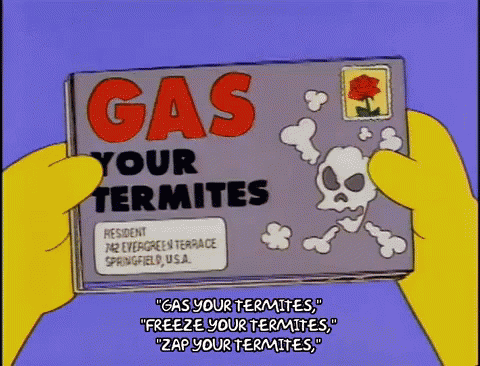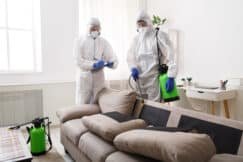Borate Termite Treatment Everything You need to Know

Borax, commonly known as sodium borate, is a salt that is created from the boron-derived substance boric acid, in this case it is used as a borate Termite treatment.
It is a powdered white product containing colorless crystals that is frequently used as a laundry enhancer or for household cleaning.
borax can kill Termites By preventing them from properly digesting their food.
Wood that has been pressure treated occasionally uses borate solutions, which are liquid goods manufactured with sodium borate.
Applying a borate solution properly will help safeguard unfinished wood in your home.
To guarantee the proper concentration and material penetration, the treatment should be administered by a qualified practitioner.
Borate solutions applied to already built structures frequently do not penetrate the wood evenly. As a result, termites might not be kept out of the interior layers.
How To Use Borate?

Many consumer, commercial, and industrial formulations contain borate. They are marketed under numerous brands and formats.
Timbor and Bora-Care are two well-known brands.
Furthermore, it is available in a variety of forms, including soluble powders, liquids, granular powders, dust, emulsifiable concentrates, baits, solids, paste, and as an addition for other pest control products.
Borates are employed in places where they won’t be washed away by irrigation, rain, or groundwater since they are water soluble.
Subterranean termites produce mud tubes that contain moisture that will rapidly absorb the borate making it very effective for the treatment of these termites.
It’s crucial to maintain the dried condition of borate. If this isn’t done, the borates will wash off of the wood and make it useless.
This only applies to areas that are outside and exposed to rain and irrigation.
Where to Use Borate?
Let’s say the risers beneath the rear porch steps are unpainted and exhibit signs of wood rot.
The best option might be a glycol-borate mixture. Unpainted wood with checks and weathering actually has better penetration.
The borate flows toward the moisture if the wood is completely wet.
You can treat the rafters, joists, and sheathing in your attic to lessen the possibility of swarming termites there.
The basement is the same. Liquid borate will protect as long as the band joists and sill plates haven’t been painted.
Due to its low cost, borate is a no-lose situation.
For between $95 and $120 per gallon, you can treat about 800 board feet of wood, which is roughly equal to 150 8-foot-long 2x4s or the typical quantity of wood found in an unfinished basement.
If your home has balloon framing, you might be able to reach into the wall cavity with a paintbrush by starting in the basement.
Protecting all wood within 3′ of the ground is desirable. However, you should be able to apply liquid borate with a brush or a sprayer to the band joists and mud sill.
Apply the treatment to the foundation wall and siding bottom outside using a garden sprayer.
Borate is a nonselective herbicide that is hazardous to plants, therefore don’t go overboard.
Locations like crawlspaces and attics normally won’t be impacted by moisture as long as they aren’t painted or contain a sealant, and as a result, they have the highest chance of lasting protected for a long time.
is the borate treatment safe?

A natural insecticide and wood preserver against termites and other wood-eating and wood-destroying insects is boric acid, which is found in borate.
Additionally, it is environmentally friendly and, when used as instructed, is safe for people, plants, and animals, so it may be used both inside and outside the home.
Of course, homeowners must be mindful of risks and prevent spills into the ground and water.
Insecticides containing boric acid are quite popular and simple to use.


